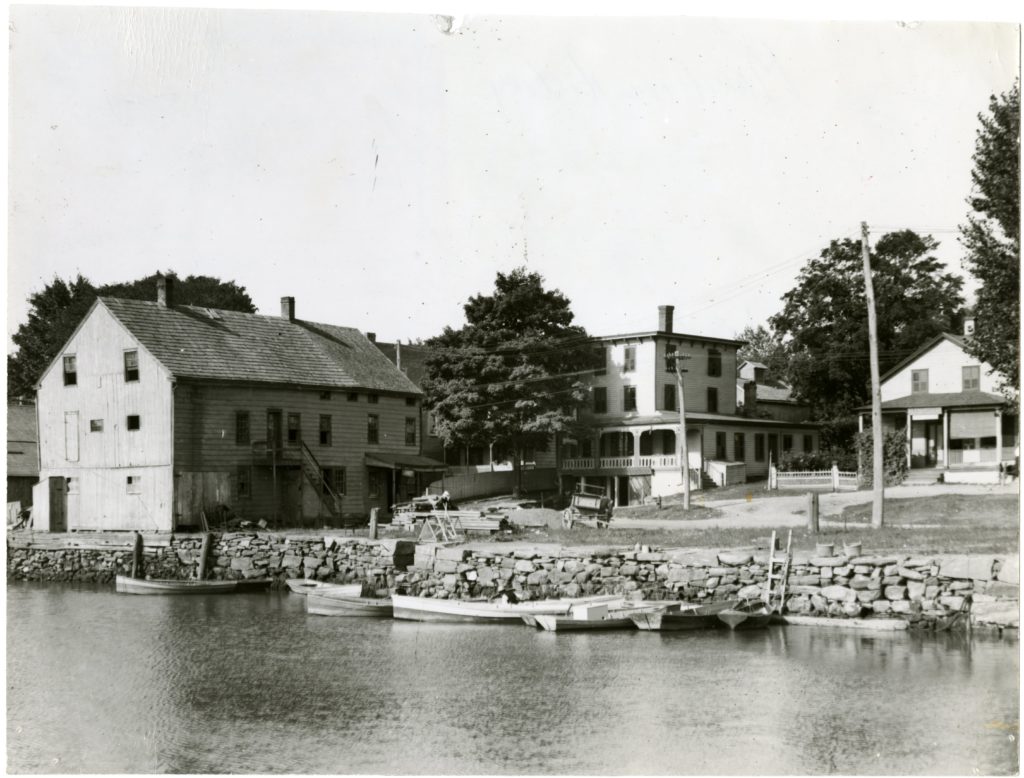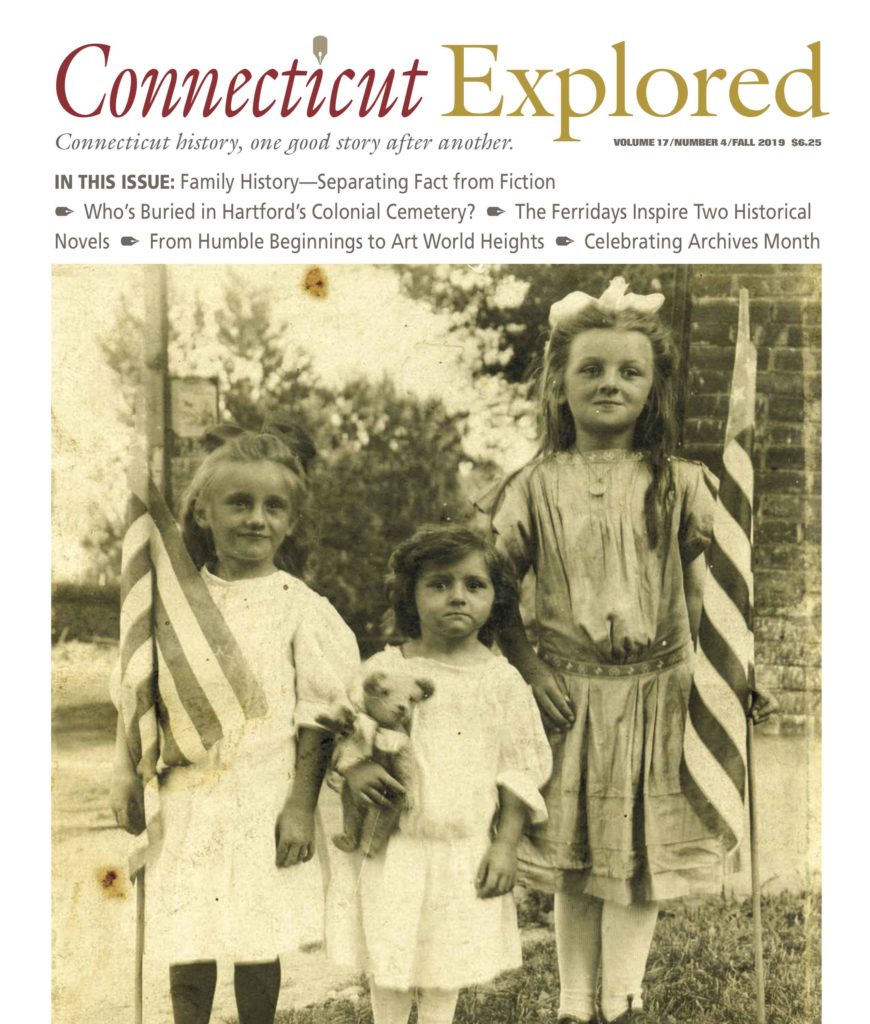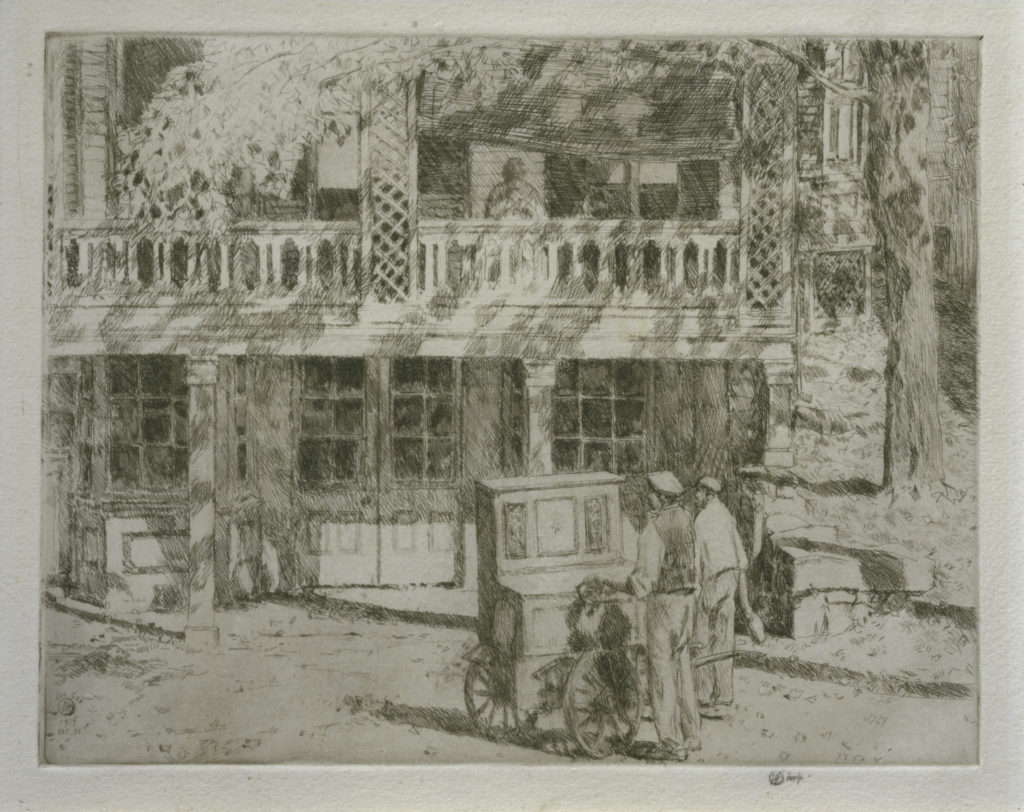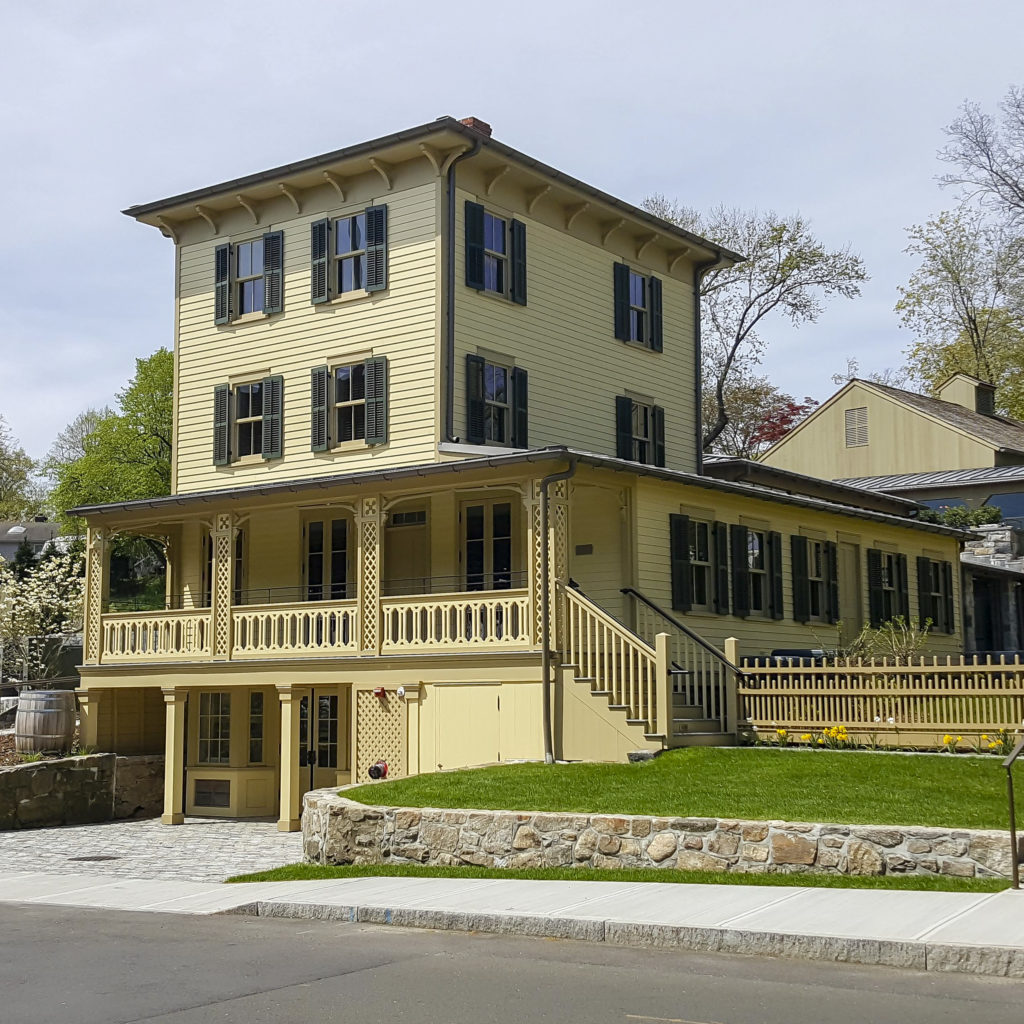(c) Connecticut Explored Inc. Fall 2019
Subscribe/Buy the Issue!
During a long stay in Cos Cob in 1915, the American impressionist Childe Hassam produced a suite of etchings depicting the people and places of the village. One of them captures an unseasonably warm autumn day—October 31, according to Hassam’s inscription on the plate. A man cranking a barrel organ has rolled up his sleeves; a woman on the porch above does needlework in the fresh air. Dappled sunlight plays over the railings, latticework, and furled bamboo blind. Hassam titled his etching Toby’s, Cos Cob.
A photograph of the Cos Cob waterfront taken about 1900 shows the building Hassam called Toby’s, but subsequent alterations would have made it unrecognizable to him. In the late 20th century, many local people assumed that the modest two-story cottage overshadowed by the I-95 Mianus River bridge at 47 Strickland Road dated no earlier than the 1930s. In fact, structural and documentary evidence reveals that it dates to circa 1805, when it was a saltbox home built to accompany Justus Luke Bush’s storehouse next door. In 1855 it became a three-story Italianate hotel listed in Daniel Mead’s 1857 A History of the Town of Greenwich as the Railroad House with a saloon in the basement. By 1935 the third floor had been removed, the roofline changed back to a saltbox, and the saloon turned into a garage.
A recent building campaign by the Greenwich Historical Society, inspired in part by Hassam’s etching, has revived the early 20th-century streetscape (minus the interstate highway) that was so familiar to the artist and his friends John H. Twachtman, J. Alden Weir, Theodore Robinson, Elmer MacRae, and other members of the Cos Cob art colony. With its upper floors and Italianate design restored, Toby’s is once again the tallest structure in the village. Today it serves as the command center of the historical society’s revitalized complex.
Among the 700 visitors who gathered to celebrate the opening of the reimagined campus last fall were 12 descendants of Tobias Burke. They came from as far away as Oregon, Florida, and Tennessee for a history-inspired family reunion.

The Italianate building that housed Toby’s saloon on the lower level as seen from the water, c. 1906. Greenwich Historical Society
Tobias Burke (1871 – 1934) emigrated from Ireland to the United States in 1891. In the 1900 census, he is listed at 47 Strickland Road, living in a rented apartment with his wife Bridget O’Leary Burke (1875 – 1967) and their infant daughter Helen (1899 – 1961). By the 1910 census, he was living at 51 Strickland Road in a three-story brick building whose construction he had commissioned. The family by then included two more daughters, Kathryn, age 9, and Mabel, age 7. Tobias was listed in town directories through 1918 as a saloon-keeper at 47 Strickland Road.
Burke’s saloon was on the ground floor. The upper floors, which had previously served as a hotel, had been divided into two apartments by the time Tobias and Bridget settled in Cos Cob. The Burkes rented one apartment but lived there only sporadically. Their moves, like those of many Greenwich residents at the time, may have been prompted by the desire to capitalize on the demand for summer rentals. According to their daughter Mabel Burke Delage (1903 – 2003), when the family wasn’t residing above Toby’s, they lived in the brick building, or in a gray cottage in between.
For the male artists and writers boarding at the nearby Holley House, Toby’s must have been a welcome amenity. The Burkes enjoyed another economic opportunity from their association with the Cos Cob art colony when Hassam hired their oldest daughter, Helen, to model for him in the Holley House. Helen was only 13 when she first posed, dressed in a Japanese kimono provided by the artist. Standing before open windows, she gazes at a bowl of goldfish set on a simple table. Far from being intimidated by the famous artist, the young model complained of “having to stare into this goldfish bowl,” her sister Mabel told me in an interview. “She was not impressed!”
Between 1912 and 1917 Helen posed for four more paintings and at least four etchings by Hassam. In the Old House (1914) depicts her, gowned in pristine white, standing before the federal-style mantel in the best bedroom of the old boardinghouse. Her hair is a rich auburn. That was Hassam’s conceit; her hair was brown. The artist was not painting Helen’s portrait but using her image to represent an ideal American woman.
Hassam did, however, create two representative portraits of Helen: an oil circa 1915, and an etching two years later, both titled Helen Burke. The etching depicts a young woman standing in the dappled shade of an apple tree. Helen was 18 by then, a graduate of Greenwich High School, and beginning a career that would culminate in her establishing her own business (a secretarial service). Hassam was spending less time in Cos Cob. Tobias Burke’s career as a saloon-keeper ended with Prohibition. Times had changed, but the relationship between Childe Hassam and the Burkes of Cos Cob endures in the restored hotel, on gallery walls, and in Bush-Holley House.
Susan Larkin is an independent art historian. Her publications include The Cos Cob Art Colony: Impressionists on the Connecticut Shore (Yale University Press, 2001).
Explore!
Greenwich Historical Society, 47 Strickland Road, Cos Cob
greenwichhistory.org, 203-869-6899



